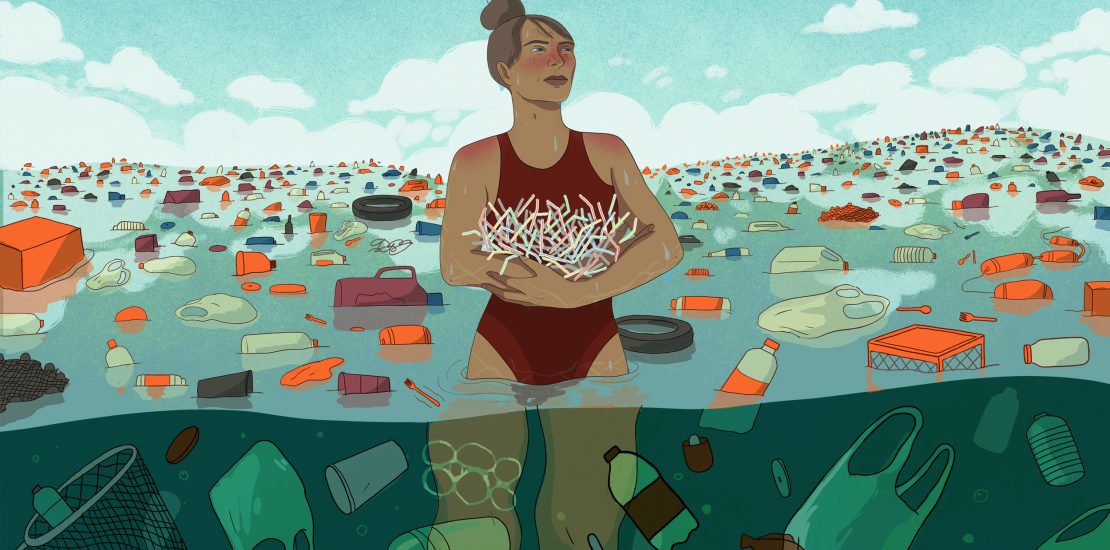Italian plastic: hurry upBy Benedetta Annicchiarico and Carola Macagno
- 16 February 2022
- Posted by: Competere
- Category: Senza categoria

The postponement of the Plastic Tax is purely palliative. If the Italian plastic industry truly wishes to be competitive, it has to invest in innovating research projects, following Germany’s lead
DEVIL’S ADVOCATE
The latest postponement of the Plastic Tax – affecting single use plastics, whether biodegradable or not – and, simultaneously, the adoption of the European Single Use Plastic directive – banning its use in the market – have once again put the spotlight on plastic. Manufacturing industries are ready to come in with guns blazing, convinced to be the victim of an ideological battle that risks compromising a workforce of about 110 thousand people, 11 thousand business, producing €30 billion in Italy alone. Numbers that, coupled with an industrial tradition and a spirit of innovation since the times of Giulio Natta’s Nobel prize win, make the plastic industry a flagship of Made in Italy. However, how effective can it really be to take it out on Europe instead of investing in the industry’s transformation and in a return to competitiveness?
SETTING THE PREMISE
For decades now, plastic has been looked at as a source of all evils affecting our planet. It is a perception born of the overindulgent use of this material, whose global production jumped for 1.5 million tons in 1950 to 367 million in 2020. But let’s make it clear: plastic itself is not the issue – the issue is the use we make of it. Humans are the cause of pollution and the responsibility for the 8 million tons of plastic that end up in the oceans each year is solely theirs.
The biggest headache is that the properties that make plastic a highly useful material are the same that make it almost impossible for it to deteriorate organically. Plastic waste dispersed in the environment can stay intact for centuries.
WHOSE FAULT IS IT?
While it is depicted as a threat to environment and life, plastic is an extremely cheap and competitive material, whose unique characteristics are hardly replicable. Suffice it to think of food sector as an example: most packaging is made of plastic, both because it does not influence the properties and quality of food (indeed it shelters them from external agents like bacteria and oxidation) and because it preserves the without the need for chemical additives. There exist a trade-off between environment and health that cannot be ignored.
The solution is to be found in correct management of plastic use and waste: giving it a second life can bring great benefit to the environment. Plastic packaging, which accounts for 40% of total plastic use, is the material with the highest rate of recycling in Italy. In 2020, 49% of packaging was recycled, a 4-percentage point increase compared to the previous year despite the bottlenecks along supply chains caused by the pandemic. Another 44% was used for energy recovery, bringing the total rate of disposal to 93%. In turn, recycled plastic finds use in many sectors, from clothing and décor to mechanical components for electric cars, thus representing a virtuous example of circular economy models.
BIOPLASTICS? NO THANKS
Looking past packaging, the picture changes a little: recycling rates for other plastic products fall to about 40%, while alternative materials like bioplastic remain environmentally controversial. A 2021 study has take a closer look to the environmental impact of bioplastic production in five countries or regions of the world, discovering that the Europe has the highest CO2 emission intensity. According to the study, emissions are mostly tied to import chains of raw materials for degradable bioplastic production that are otherwise scarce on the continent. Indeed there is a distinction to be made among bioplastics: the first kind is derived from bamboo and cellulose and is accepted by the EU as organic and biodegradable. The second kind is obtained from the chemical processing of natural ingredients like starch and sugar but, because of the intensive land use and long decomposition times it requires, it is lumped in with “traditional” plastic.
That is why the 2019 Single Use Plastic directive originally banned the latter kind of bioplastic. In Italy however, it was applied with a waiver allowing its use in the market and its disposal in organic waste. It was a choice whose rationale is not quite clear, beyond the need to keep at bay those who think that adding the prefix “bio” is enough to set us on the right path.
TIME FOR A NEW GOLDEN AGE OF ITALIAN PLASTIC
When it comes to circular economy, our country is one step ahead of many of its European partners. We should stop playing on the defense, but rather come up with a plan of attack through innovative projects that can floor the market. Over the past few months, Germany’s Pavilion at the 2020 Dubai World Expo presented several studies carried out in a partnership between universities and enterprises on the production of plastic through CO2 stocking and plastic-consuming bacteria. It is a sign that even in Germany, where the manufacturing sector is not normally in the Grünen’s favor, entrepreneurs have set out to find alternative courses of action. Is our Institute of Technology also at work?
